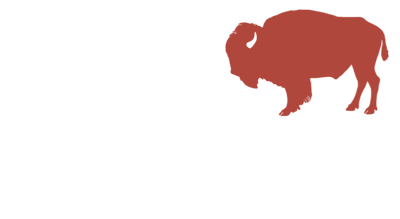-
Bison
- Beef
-
Dog Food
- Spice Blends
-
Learn More
March 18, 2021
You’ve heard them called “buffalo.” You’ve heard them called “bison.” Naturally, you’ve probably wondered: what is the difference between a buffalo and a bison? The answer is a little complex. Bison and buffalo are, in fact, two different (but related) animals; however, when early settlers first saw American bison, they confused it with the buffalo native to Africa and Asia, and the name stuck! Today, many use the terms interchangeably to refer to the majestic animals and delicious meat that have become part of the fabric of American history.
Beyond their storied history, bison are fascinating creatures. Read on to learn some of the most interesting, exciting facts about American buffalo!

When it comes to American buffalo, “big” is an understatement. A male bison can weigh about 2,000 pounds and stand at about six feet tall. Females, on the other hand, weigh up to 1,000 pounds and are typically four to five feet in height. Even calves can weigh as much as 70 pounds at birth!
When a bison is feeling calm, its tail will hang loosely and swish from side to side. However, when it feels alarmed or is preparing to charge, its tail lifts and rises straight up. Regardless of the tail position, a bison can charge at any second, so you should never get too close to one.
Despite their size, bison can run at speeds up to 40 miles per hour and can jump six feet vertically. They can also spin around and swim quickly, making them best viewed from a distance.
Many animals burn extra calories to keep themselves warm in freezing temperatures, but buffalo do not need to. This is because their winter coats are incredibly dense, even allowing snow to sit on the surface of their fur without melting. Meanwhile, the bison remains safe and warm in its layers of insulation.
Bison calves are also called “red dogs” because they're born with a reddish hide that changes color after birth. As they get older, their hide becomes a deep brown color. This is also when they develop a hump on their backs.
Buffalo make a variety of noises, including grunts, growls, bellows, and snorts. Some people have compared the grunting noise of a bison to the sound of a lawnmower or a truck.
Both male and female bison have horns, which start to grow when they are about two years old. Prior to this age, the horn is a short stump that protrudes from the head just above the ears. The horns then curve upward at a 45-degree angle, and the growth pattern continues until the bison is about four years old. At first, the horns might be black, but as the bison ages, they turn gray. When the buffalo gets older, the horns become stumpy and rounded.
Bison meat is delicious and nutritious, containing fewer calories, more protein, and less fat than beef. The best part? Even though it's a lot healthier, bison meat tastes a lot like beef. In fact, most people even think bison tastes better than beef!
Ready to experience the incredible flavor of buffalo meat? From bison brisket to bison tri-tip steak, you can find a variety of high-quality cuts from Buck Wild Bison. Contact us today to learn more about our products or place an order!
March 31, 2025
Are you considering bison ground meat for your furry friend? Many pet owners are exploring alternative protein sources for their pets, and bison might just be on that list. In this article, we’ll explore whether bison ground meat is a good option for pets and the factors to consider before making it a part of their diet.
March 23, 2025
The keto diet has gained immense popularity for its potential to assist in weight loss and enhance mental clarity. However, choosing the right protein sources is essential to adhere to this low-carb, high-fat diet effectively. Bison steak is often mentioned in keto discussions, but is it really a suitable option? Let’s explore!
March 09, 2025
Choosing the right diet for your dog can feel like navigating a maze of options, each advertised as the best choice for your pet’s health. Among the array of diets available, raw dog food is gaining momentum as a natural and nutritious option for many pet owners. In this blog, we’ll explore what raw dog food is, its potential benefits, considerations, and how to safely introduce it to your furry friend’s diet.
Sign up to get the latest on sales, new releases and more…
© 2025 Buck Wild Bison.
A veteran owned and operated company.
Powered by Shopify
